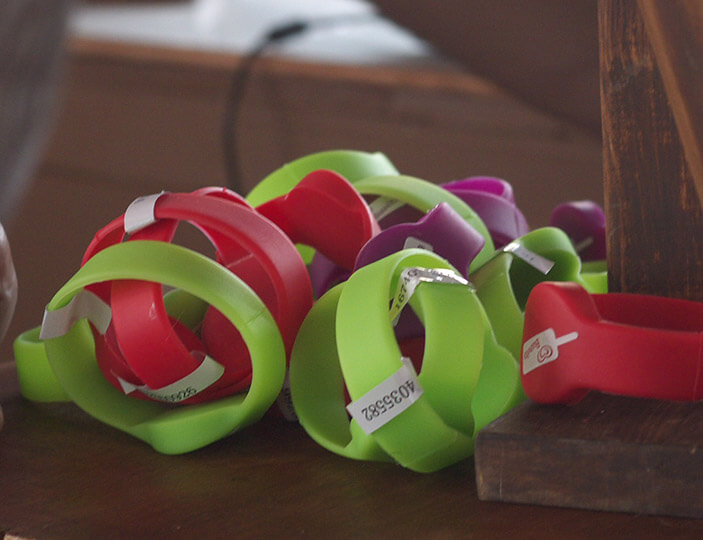Using a 3D printer, Brunel University researchers have fabricated a flexible wearable battery that could charge up a smartphone and more.
Researchers at Brunel University London have found a simple and affordable method to 3D print a flexible wearable battery.
It’s a world first for materials research, and it could pave the way for novel designs for super-efficient, wearable power. An emergency backup for smartphones is one obvious application; in the future it could also provide charge to electric cars, pacemakers, and more.
“This is the first time a flexible supercapacitor including all its components has been produced by 3D printing,” says Milad Areir at Brunel’s Cleaner Electronics Research Group.
“The most popular way to produce them is screen printing, but with that you can’t print the frame of the supercapacitor on silicone.”
The way it’s made is that a 3D printer extrudes layers of silicone, glue and gel electrolyte using a fused deposition modeling (FDM) technique. The result looks like a clear festival wristband. But sandwiched inside is a supercapacitor, which stores energy like a battery.
Researchers in many countries have already found new ways to make flexible supercapacitators. But their techniques, which include selective laser sintering (SLS) 3D printers, can be expensive. Or they use different machines to manufacture different parts.
“Our technique brings it all together into one process with one machine,” says Milad. “It will definitely save time and costs on expensive materials.”

Flexible Wearable Battery Made on Open Source 3D Printer
A simple open-source printer connected by USB to a syringe driver with a stopper motor can print the paste layers. Only three or four syringes are need, depending on the size of the supercapacitator.
The wristbands are printed with a honeycomb pattern infill, so less material needs printing, so they are quicker to make. But designers can also experiment with different complex shapes.
The work, published in Materials Science and Engineering, shows the flexible wearable battery can be made using everyday objects from a hardware store instead of sophisticated expensive metals or semiconductors. What’s more, they stand up to stress tests without losing power.
“This is the first time a flexible supercapacitor including all its components has been produced by 3D printing.”
“This has developed a novel 3D printing method for manufacturing flexible supercapacitators, by one single continuous process using low-cost flexible silicone compatible with the electrode, current collector and electrolyte materials,” according to the study.
The process is easy to replicate, the study says. Using paste extrusion, 3D printing can help develop more sophisticated electronic devices with different mixes of paste.
“In future it can be used for mobile phones,” said Milad. “For example, if the phone battery is dead, you could plug the phone into the supercapacitator wristband and it could act as a booster pack, providing enough power to get to the next charging point.”
Source: Brunel University

License: The text of "Flexible Wearable Battery 3D Printed at Brunel University" by All3DP is licensed under a Creative Commons Attribution 4.0 International License.